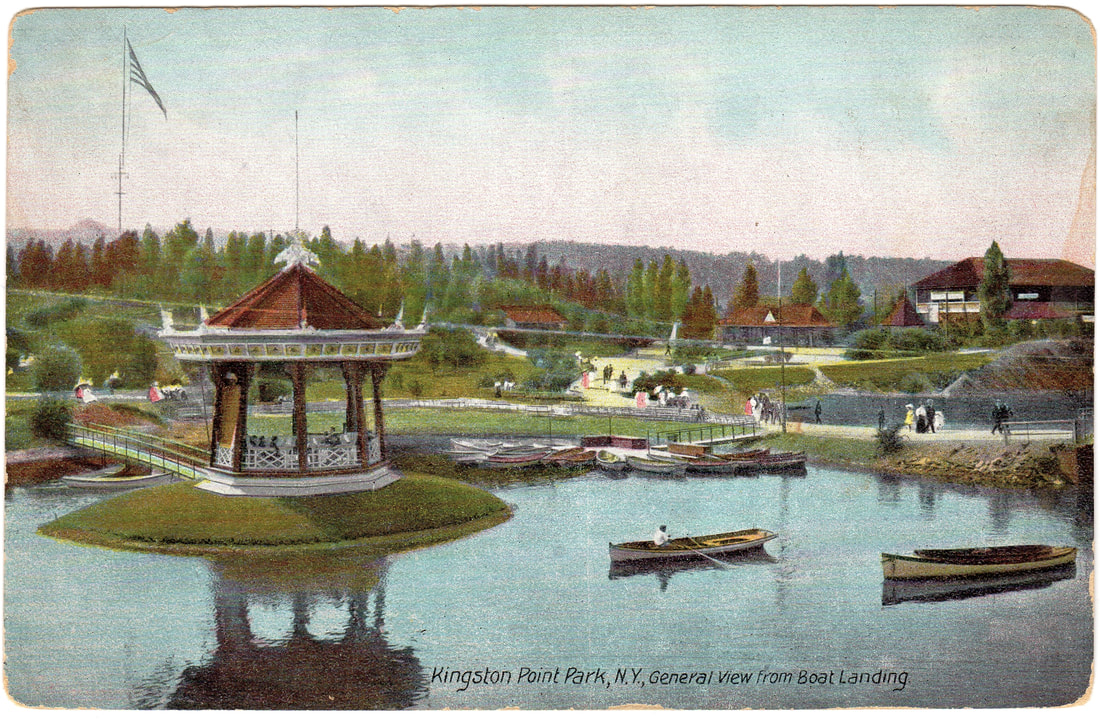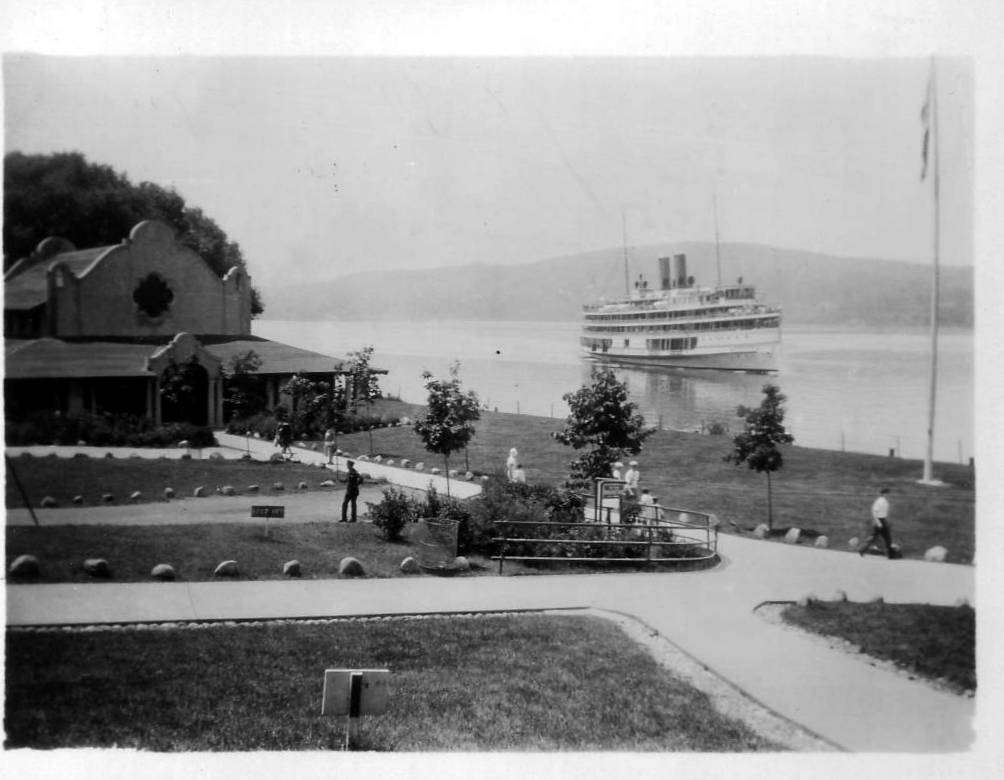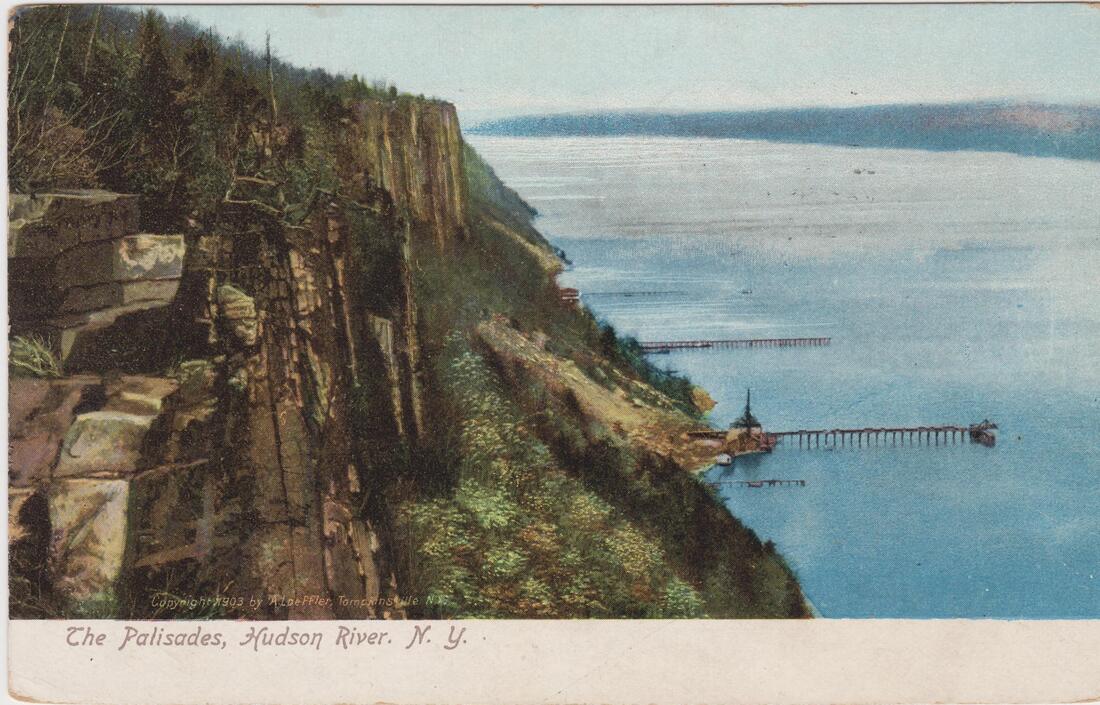History Blog
|
|
|
|
Media Monday: How a French Nobleman Got a Wife Through the New York Herald Personal Columns (1904)2/14/2022 Happy Valentine's Day! Todays' Media Monday post is a light-hearted silent film based on a true story, and set at a famous Hudson River landmark. In 1904, the Edison Manufacturing Company produced this short silent film, "How a French Nobleman Got a Wife Through the New York Herald Personal Columns." Based on a real story, the picture opens with a "Personal" advertisement which actually appeared in the New York Herald of August 25th, 1904. It reads: "Young French Nobleman, recently arrived, desires to meet wealthy American girl; object matrimony; will be at Grant's Tomb at 10 this morning, wearing boutonniere of violets." Housed at the Library of Congress, the film follows a young French nobleman whose idea to place a personal in the newspaper in order to find a wealthy wife, whom he will meet at Grant's Tomb, doesn't quite go as planned. Hilarity ensues. The Library of Congress describes the film: The first scene shows the young "Nobleman" in his dressing room. He picks up the "Herald," and finally locates his "ad" with evident satisfaction. He then fastens a large bunch of violets to the lapel of his coat and departs for rendezvous. The next scene shows the "Nobleman" at Grant's Tomb, pacing impatiently back and forth. Soon a handsome young lady passes him, and seeing the violets, mutual recognition quickly follows. Another lady soon arrives, and others in rapid succession until the young Frenchman is completely surrounded. He finally escapes and runs for his life down the Riverside Drive, pursued by a dozen or more of his fair would-be captors, a stout lady in white bringing up the rear. He leads the girls a merry chase over sand banks, fallen trees, through bushes, over rail fences, and finally escapes, as he thinks, by wading into a pond up to his waist. The girls finally reach the pond and stand on the bank, imploring him to come ashore. But the Frenchman pays no heed to them. Finally the stout lady, who has been last throughout the entire race, arrives upon the scene, and without hesitating for an instant she dashes into the water and finally captures first prize and a titled husband in the bargain, again proving the old adage that "The race is not always to the swift." We hope you enjoyed this fun silent film, and have a Happy Valentine's Day! If you enjoyed this post and would like to support more history blog content, please make a donation to the Hudson River Maritime Museum or become a member today!
0 Comments
Tonight the museum will welcome Wes and Barbara Gottlock to discuss their book Lost Amusement Parks of the Hudson Valley as part of the Follow the River Lecture Series. So we thought we'd revisit some of the stories of amusement parks and steamboat landings on the Hudson River we've already published here on the History Blog. Follow the links in the introductions below to read more about each park.  Postcard of Kingston Point Park, featuring the island bandstand and rental boats. Hudson River Maritime Museum Collection. Postcard of Kingston Point Park, featuring the island bandstand and rental boats. Hudson River Maritime Museum Collection. Kingston Point Park Kingston's own local amusement park, Kingston Point Park was built by Samuel Coykendall, owner of the Cornell Steamboat Company and Ulster & Delaware Railroad. It featured a merry-go-round with a barrel piano (which is now in the museum) along with walking paths, a Ferris wheel, boat rentals, and other attractions. The main point was to serve as a landing for the Hudson River Day Line, and trains and trolleys would whisk passengers to Kingston and the Catskills. Kingston Point Park also featured prominently in 4th of July celebrations in the past.  Hudson River Day Line steamer "De Witt Clinton" approaching Indian Point Park in foreground, circa 1923. From the Donald C. Ringwald Collection, Hudson River Maritime Museum. Hudson River Day Line steamer "De Witt Clinton" approaching Indian Point Park in foreground, circa 1923. From the Donald C. Ringwald Collection, Hudson River Maritime Museum. Indian Point Park Formerly a farm, Indian Point Park was purchased specifically as a destination park for the Hudson River Day Line to rival that of Bear Mountain. It was later converted into a nuclear power plant.  Postcard of steamboat docks at the Palisades, Hudson River Maritime Museum Collection. Postcard of steamboat docks at the Palisades, Hudson River Maritime Museum Collection. Palisades Interstate Park The creation of the Palisades Interstate Park was due in large part to the work of women. The Palisades had long been a major landmark for any Hudson River mariner. Elevators were used in the late 19th century to get visitors from their steamboats at water level up to the park on top of the cliffs. Escaping Racism Amusement parks and picnic groves on the Hudson River could also be an escape. So in honor of Black History Month, we're re-sharing this wonderful article on how Black New Yorkers used steamboat charters to area parks to escape the prejudice and racism of the 1870s. Lost Amusement Parks of the Hudson Valley There's still time to join us for tonight's lecture! Register now. If you enjoyed this post and would like to support more history blog content, please make a donation to the Hudson River Maritime Museum or become a member today!
Editor's Note: This article is from the November 7, 1891 issue of Harper's Weekly. The tone of the article reflects the time period in which it was written. "Getting on Top of the Palisades by Jno. Gilmer Speed The largest elevators for carrying passengers in the world have just been completed on the banks of the Hudson, near Weehawken. The high table-land in New Jersey, opposite New York city, and between the Hudson River and the Hackensack, has up to this time not been used as generally for purposes of pleasure and residence as it should have been. This elevated plain, known as the Palisades, is at its beginning some one hundred and fifty feet above high tide, and is over a mile wide at the same point. It stretches north for many miles up the Hudson River, and naturally rises in elevation as it proceeds. This high land has been accessible only by steep grades for wagon roads, and by means of stairways which climbed laboriously up the steep cliff. The Hudson County Railway Company, which operates the elevated road at Hoboken and controls many of the street car lines in that neighborhood, has of late years been extending these lines, and increasing the facilities for getting on top of the Palisades, and from one part of this high plateau to another. The most recent addition to the plant of this company has been the building of huge elevators at Weehawken, where the ferry-boats from Forty-second Street and Jay Street, New York city, discharge their passengers, and where also the West Shore Railway starts north and west to Albany and Buffalo. These elevators are the largest ever constructed for passengers, and in planning them the engineers have adopted new devices to secure their safety against accidents. From the elevators, which rise just from the water’s edge, there is an immense viaduct or elevated railroad which runs some eight hundred feet back to the hill, where connections will be made with the various steam and horse cars which will run in one direction and another. In crossing the Hudson River from New York the stilt-like structure for the elevators and railroad cars looks frail and delicate, and suggest more a spider’s web than a very stable and solid structure capable of carrying immense weights and moving loads, and still having a surplus strength very much beyond the weight which could ever be placed upon it. At a distance one cannot fail to have the feeling that the structure is too light and insecure to ever do any very heavy or continuous work. This feeling is very much the same that one experiences in looking from a distance at the high curve on the New York Ninth Avenue elevated road above the Central Park. Arrived at Weehawken, however, and standing under the structure, the veriest novice in bridge-building cannot fail to be impressed with the strength and solidity of these steel piers and trusses. They do not look light now, but seem entirely sufficient to do the Titan’s work for which they were designed. What this work is may be gathered from the fact that in every hour six thousand persons can be taken each way, up and down the elevators and to and fro across the viaduct, which is 153 feet above the water. Elevators have never before been asked to do such work as this. The elevator tower has been made for three cars, each of which will hold one hundred and thirty-five persons. They run independent of each other, and all can be going either up or down at the same time, or variously, as desired. The doors are almost as wide as the cars, and the conductor with a simple device opens and closes both doors at once. On one side the passengers are discharged, and they enter from the other end; therefore, when there is a rush of travel, the cars will empty and fill at the same moment. The elevators are designed to have a speed of 400 feet a minute, but it is not proposed to run them faster than 200 feet a minute. At this rate each elevator will take up the 153 feet from the water’s edge to the viaduct 135 persons in 45 seconds, and it is estimated that in 30 seconds more the passengers can be discharged and a new load taken on. For the ordinary traffic there would be no need for such quick work or so large a capacity as this, but within a short time places of amusement and a race-track have been started near Weehawken. To these places and from them great and impatient crowds come and leave at the same hour, and it is necessary to handle a whole boat or train load at once. The power to run the elevators is hydraulic, the water being stored in compressed tanks under a pressure of 190 pounds per square inch by means of two compound condensing Worthington pumps of about 85-horse power each. Only two of these boilers, however, will be used at once, and the third will be held in reserve. The same firm which built the lifts in the Eiffel Tower has designed and constructed these enormous elevators. F.E. Brown, Jun., of the Otis Company, designed the whole elevator plant, the engineer in charge in both instances being Mr. Joseph R. Furman, of the same company. Mr. Furman is a young man, not yet twenty-seven, and has justified the responsibility intrusted to him most admirably. The most important feature in the construction of an elevator is the device for stopping it in case of an accident. In nearly all of the modern elevators these devices have been made to act automatically, so that nothing need depend upon the skill, courage, or presence of mind of the conductor. Were this not so, it would test the courage of any man to trust himself to the careless men in charge of the elevators in the large office buildings, the architects of which usually specify that the elevators shall have a speed of 700 feet per minute. It is true that none of them goes so fast as this, for the reason that it would be impossible for the conductors to stop accurately at the several floors to discharge or take on passengers. But it is pleasant to know that even though a conductor should lose his head, or the car break loose from its ropes, it would be stopped by the devices now in general use, and no one would be hurt. The testing of these devices is therefore most important, and the test applied by the builders to these huge cars which are to lift people to a level with the top of the Palisades was watched with interest by all concerned. The apparatus for testing consisted of a heavy timber trestle supporting the guide strips, between which a temporary cage loaded with 84,000 pounds of cast iron – equivalent to the weight of the cars and their load of people – was suspended on a trip lever, the support of which could be disengaged by pulling on a light line. The safety grips, which were the actual ones to be used in the permanent elevators, were placed under the cage, one on each side, in their proper position with relation to the guide strips. From each safety grip a light line, representing the governor ropes to be used on the elevators, was carried to and attached to the cross-head of the timber trestle. At the signal the lanyard was pulled and the cage with its load released. It dropped freely about two inches, when the safety engaged with the guide strips, and after a further slide of one and three-quarter inches came to rest without shock. Then another test was made with 2000 pounds more of iron added, and the result was substantially the same. Then came a third test, for the personal satisfaction of the engineers who had designed the safety device. With a load of 36,000 pounds they let the car fall ten inches before the safeties were applied, and on this occasion the car dropped only eighteen inches. This was eminently satisfactory to them, as had also been the other tests. The guide strips are of yellow pine, six inches by eight inches, built up in three pieces of two and two-thirds by six inches, strongly spiked together, and are secured to the latticed channel iron posts of the elevator tower by three-quarter-inch bolts spaced about fourteen-inch centres; the heads of these bolts are countersunk in the faces of the guide strips, so as to leave a smooth guiding surface. The safety grips consist of forgings with a rectangular notch surrounding the guide strip, the edges of the notch being beveled to form cutting edges. Below the main forging is bolted a plate with a similar notch, but having toothed edges, the whole swinging on a centre so placed that when the safety is in normal position the toothed and chisel edges are well clear of the guide strips, but when swung outward they engage and cut into the guide strip on its face and two sides. The test on the Eiffel Tower elevators loaded with 32,000 pounds was very gratifying to the French engineers. On the first elevator, when the ropes were cut, the car fell twelve feet. On the second car, when the safeties had been readjusted, and the same weight put on, the fall was only eight inches. The largest elevator in use in New York city is that in the tower of the Produce Exchange. This will carry fifty persons. This was also the capacity of the cars in the Eiffel Tower. It will be seen, therefore, that each of these new elevators to the top of the Palisades has a capacity more than two and half times greater than those which were popularly heretofore thought to be quite as large as lifts could be safely constructed. The Weehawken structure will be finished and thrown open about the middle of November. It will be interesting to see how easily large numbers of people can be taken up and down in this manner, for in the plans now under advisement for giving rapid transit to New York city by means of deep underground roads, the elevator for raising and lowering passengers is a very important feature of the scheme." Read about the current status of the elevator here. AuthorThank you to HRMM volunteer George Thompson, retired New York University reference librarian, for sharing these glimpses into early life in the Hudson Valley. And to the dedicated HRMM volunteers who transcribe these articles. If you enjoyed this post and would like to support more history blog content, please make a donation to the Hudson River Maritime Museum or become a member today!
|
AuthorThis blog is written by Hudson River Maritime Museum staff, volunteers and guest contributors. Archives
July 2024
Categories
All
|
|
GET IN TOUCH
Hudson River Maritime Museum
50 Rondout Landing Kingston, NY 12401 845-338-0071 [email protected] Contact Us |
GET INVOLVED |
stay connected |
